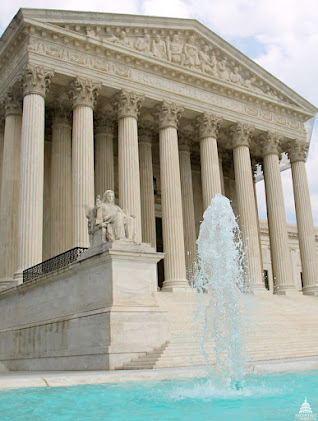My Adaptive Leadership Journey
When I first picked up The Practice of Adaptive Leadership (2009), my first thought was, “oh, great, another theoretical leadership book to read.” But as I got deeper into it, I really came to appreciate how it was structured, and the various tools and techniques it offered. I have been able to use these adaptive leadership skills and hopefully will be able to implement more in the future. This book speaks to my leadership journey over the past few years, very well.
I normally do not like introductory
sections of books; they often feel very superficial. But this book was
different – and it gave me the pause to really consider what it was all about.
When they began by saying that “answers cannot come from on high,” I really
began to pay attention. This idea that we—those without power or position—could
in fact orchestrate major change and exercise leadership was a brilliant, and
daunting, concept. The introduction also gave a “how to” guide to using the
book—a meta-leadership idea if I ever saw one. Giving people the information,
the tools, the vision up front is very helpful.
Diagnosis and data collection underpin
much of the adaptive leadership concept. And it is not one-time or static, but
on-going. In fact, in order to stay nimble, continuous data collection is
imperative if one is able to detect the (usually faint) signals of change at
the fringes. The focus on data to help identify the larger patterns and help
make the case for change is important. This course especially has focused my
attention on the data collection, analysis, and feedback cycles.
Chapter 4 deals with “Diagnose the
System.” This was a new concept for me and I appreciated that it stretched me
in ways I had not envisioned. By seeing the organization as a system—a whole,
inter-connected, complex series of structures, cultures, sub-cultures, and
assumptions—I was better able to understand the adaptive challenges and
potential areas of opportunity and resistance. The book reinforces
and elaborates on many of the conceptual issues I had encountered in previous
agencies, especially my last one. The force of the status quo, its
staying power, and the ability to become entrenched—without even knowing it—was
another helpful marker for me. It gave me both the confidence and understanding
that this is often a “long game.” The old saying goes, “Rome wasn’t built in a
day,” and the ability to change (especially in a large organization) “doesn’t
happen on a dime,” as another saying goes.
A systematic, strategic approach also
helps as we discover change opportunities. A wise leader and friend
asks: “how do you boil a lobster?” The answer: “Put him in cold water and then
start to slowly turn the heat up over time.” Making slow, often subtle changes
over time can have a major impact. But turning up the heat also involves
crucial conversations and conflict. This was another learning point for me.
Previously I had been afraid of conflict. I saw it as a negative; but I have come
to realize that it is vitally important, if done correctly. The book was
instrumental in this process. The seven steps to orchestrating conflict (pp.
152-153) were insightful and gave me a framework to work through these issues.
I have to remind myself to be focused on the problem, not the personalities;
their pushback often has a reasonable basis.
One of the most important parts of the
book for me was the section on “Develop Leadership Capacity” (pp. 170-175) in
the chapter on building an adaptive culture in an organization. Within this
section, the idea of continuous learning and institutionalizing a belief in the
value of reflective inquiry was critical. It helped me understand the
importance of taking the questioning process—looking at past, present, and
future—and engaging our minds to really think beyond the instant issues we are
facing. Taking a broader, systematic, and more strategic approach to how we
work is essential, and a guiding principle of the vision of our organizational
leadership. Being able to put that into practice, by developing a guide to
conducting “after-action reviews” and identifying and sharing best practices
and lessons learned, is really the ultimate goal.
I could have used the concepts of
adaptive leadership to help make small changes in my own area and sphere of
influence, but the impacts would be significantly limited due to the factors I
discussed above. As I reflect upon that time, the concept of “staying true to
myself” was very helpful; I really became to focus on my core purpose and
interest in leadership. Both the individual manager and the wider
organization’s inability to support my leadership interests launched me to
really explore the space on my own. I was able to see myself as a system
(although I didn’t yet use those terms); it enabled me to see myself as a
complex, inter-connected series of competing values and interests (p. 178), but
also someone who yearned to better understand leadership, its implications, and
have a positive impact on individuals and the broader organization.
Change is hard, both organizationally
and personally. It requires an understanding of what is being lost, what is
being gained, and the difficulties and complexities it presents. Being adaptive
and leading that way requires these skills. It is necessary, given the constant
churn and difficult situations society and organizations face these days.
Working on the practice field and then seeing things from the balcony are
essential to the reflection necessary to gain insight into what is working and
what can be updated based on the situation. This is how we can become the best
leaders for whatever context we face and gives us the tools and capabilities to
confront the issues of our day.
Heifetz, R. A., Linsky, M., & Grashow, A. (2009). The
practice of adaptive leadership: Tools and tactics for changing your
organization and the world. Boston, MA: Harvard Business Review Press.
Photo: https://www.vecteezy.com/free-photos


Comments
Post a Comment